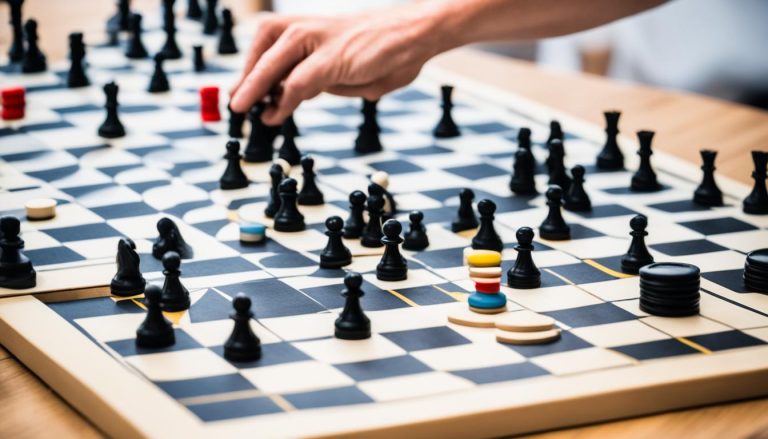Welcome to our guide on how to play baseball! Whether you’re a beginner or looking to improve your skills, this article will provide you with the necessary information to get started. Baseball is a game that requires teamwork, precision, and a solid understanding of the basics. From the rules and positions to equipment and techniques, we’ve got you covered.
How to Play Baseball?
Let’s start with the basics. Baseball is played between two teams of nine players each. The game is divided into nine innings, and the objective is to score more runs than the opposing team. To score a run, a batter must hit the ball and successfully run around all the bases. The game is played on a diamond-shaped field with four bases and a pitcher’s mound.
Understanding the positions and equipment in baseball is essential. Each player has a specific position on the field, such as pitcher, catcher, first baseman, second baseman, third baseman, shortstop, and outfielders. Each position has its own responsibilities and plays a crucial role in the game. Players also require specific equipment like a glove, bat, helmet, and uniform to play the game.
To excel in baseball, mastering various techniques and strategies is key. This includes hitting, pitching, fielding, and base running. Learning proper form and technique for each aspect of the game is crucial for success. Additionally, having a good understanding of different strategies like bunting, stealing bases, and defensive alignments can give you a strategic advantage.
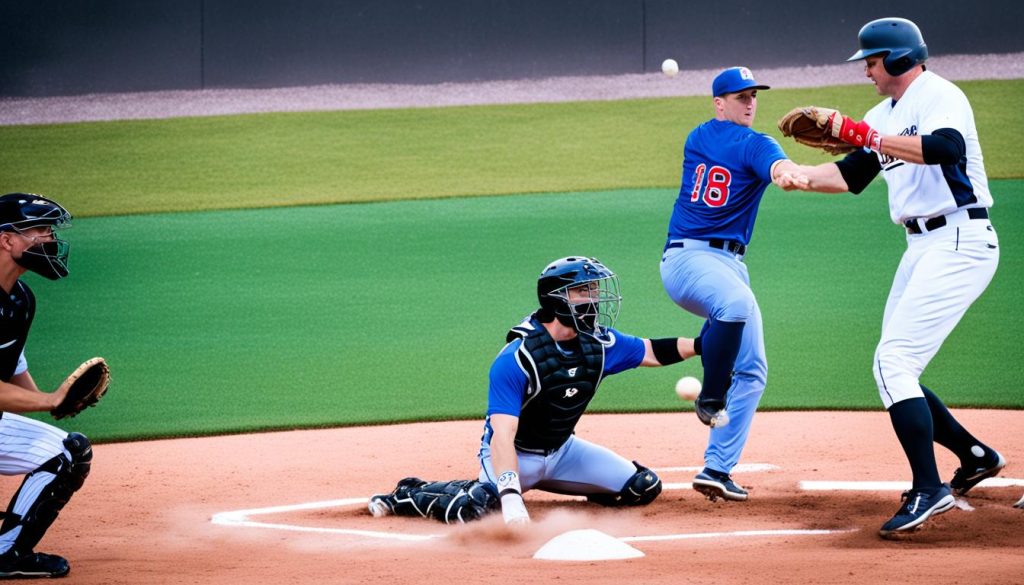
Understanding Baseball Positions and Equipment
In the game of baseball, each player has a specific position on the field, contributing to the overall strategy and performance of the team. Understanding these positions and the equipment required is crucial for anyone learning how to play baseball.
Baseball Positions
There are several key positions in baseball, each with its own set of responsibilities:
| Position | Responsibilities |
|---|---|
| Pitcher | The pitcher throws the ball to the batter with the goal of getting them out. |
| Catcher | The catcher receives the pitches from the pitcher and plays a vital role in defense. |
| First Baseman | The first baseman defends the area near the first base and catches throws from the other players. |
| Second Baseman | The second baseman covers the area near the second base and assists in fielding and throwing. |
| Third Baseman | The third baseman guards the area near the third base and makes plays to prevent opposing runners from advancing. |
| Shortstop | The shortstop plays in the area between second and third base and is responsible for fielding ground balls. |
| Outfielders | There are three outfield positions: left fielder, center fielder, and right fielder. Outfielders catch fly balls, prevent hits from reaching the outfield, and make accurate throws. |
Each position is crucial to the success of the team, and players must develop specific skills and techniques to excel in their respective roles.
Baseball Equipment
Playing baseball requires specific equipment to ensure safety and performance:
- Glove: Every player needs a sturdy glove to catch and field the ball effectively. Gloves are available in various sizes and designs to suit different positions.
- Bat: The bat is used by the batter to hit the ball. Bats come in different lengths and weights, and players choose one that suits their comfort and hitting style.
- Helmet: Safety is paramount in baseball, and all players must wear helmets to protect themselves from head injuries while batting or playing in the field.
- Uniform: A proper baseball uniform, including a jersey, pants, and socks, unites the team and creates a sense of camaraderie on the field.
Having the right equipment enhances performance and ensures a safe and enjoyable playing experience for all involved.
In summary, understanding the positions and equipment in baseball is essential for anyone looking to learn the game. Each position carries its own responsibilities, and players must have the appropriate equipment to play safely and effectively.
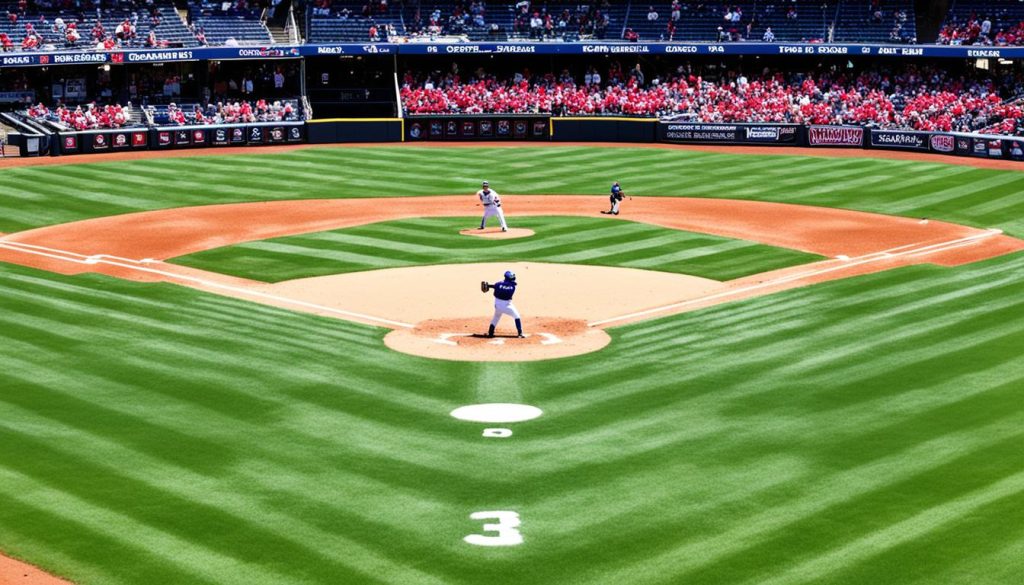
Mastering Baseball Techniques and Strategies
When it comes to excelling in baseball, players need to go beyond the basics and master a range of techniques and strategies. Let’s explore some of the key areas that players should focus on:
1. Hitting Techniques
Developing proper form and technique is crucial for successful hitting. Players should focus on their stance, grip, and swing mechanics to ensure solid contact with the ball. Consistent practice and refining these techniques can significantly enhance a player’s batting skills.
2. Pitching Accuracy
Pitching is a critical aspect of the game, and accuracy is key. Players should work on their pitching mechanics, control, and pitch selection to effectively challenge opposing batters. Through regular practice and honing these skills, pitchers can become more reliable and influential on the field.
3. Fielding Fundamentals
Fielding requires quick reflexes, agility, and sound technique. Players should focus on skills such as catching, throwing, and proper footwork to efficiently field balls. Additionally, understanding defensive positioning and communication strategies can contribute to a stronger team defense.
4. Base Running Strategies
Base running is not just about speed; it also involves strategic decision-making. Players should be knowledgeable about stealing bases, reading pitchers, and taking efficient leads. By understanding these strategies and practicing situational awareness, players can maximize their impact on the basepaths.
5. Defensive Alignments
Defensive alignments involve positioning fielders optimally to counter the opposing team’s hitting tendencies. Coaches and players should study the opponent’s hitters, analyze data, and make informed decisions on where to position fielders. This strategic approach can lead to more successful outs and defensive plays.
| Techniques | Strategies |
|---|---|
| Hitting | Bunting, situational hitting |
| Pitching | Varying pitch selection, keeping runners off-balance |
| Fielding | Shifts, double play execution |
| Base Running | Stealing bases, hit-and-run plays |
| Defensive Alignments | Outfield shading, infield shifts |
By mastering these techniques and incorporating effective strategies into their gameplay, players can significantly improve their overall performance on the field. Consistent practice, dedication, and ongoing learning are pivotal in honing these skills and becoming a formidable baseball player.
Key Rules and Scoring in Baseball
Understanding the rules and scoring system is crucial for playing baseball effectively. This section will cover the key rules that govern the game and explain how scoring works in baseball.
Pitching Regulations
When it comes to pitching, there are specific rules that pitchers must follow. These rules include maintaining a proper pitching motion, staying on the pitcher’s rubber, and not making illegal deliveries, such as balks. Violating these rules could result in penalties for the pitcher and the offending team.
Batting Rules
Baseball has rules in place to ensure fair play and safety during batting. Batters must stay in the batter’s box, avoid intentionally interfering with catchers, and not use illegal equipment. Failure to adhere to these rules can result in penalties for the batter and their team.
Fielding Regulations
Fielders also have specific rules to follow while playing defense. These rules include making legal catches, properly tagging baserunners, and avoiding interference. Violating fielding regulations can lead to penalties for the fielding team.
Base Running Rules
Base running in baseball requires players to follow certain rules. These rules include staying on base paths, not interfering with fielders, and not sliding dangerously. Failure to comply with these rules can result in outs or penalties for the baserunner and their team.
Scoring System
In baseball, scoring runs involves crossing the bases and reaching home plate. There are various ways to achieve this, including hits, walks, and stolen bases. The number of runs scored depends on these factors and is recorded for each team. The team with the most runs at the end of the game wins.
| Scoring Factors | Runs |
|---|---|
| Hits | 1 run for each baserunner who crosses home plate |
| Walks | 1 run for the batter and any baserunners forced to advance |
| Stolen Bases | 1 run for each baserunner who successfully steals a base and crosses home plate |
Understanding the rules and scoring system in baseball is essential for fair play and successful gameplay. By familiarizing yourself with these regulations, you can enjoy the game to its fullest and participate effectively as a player or spectator.
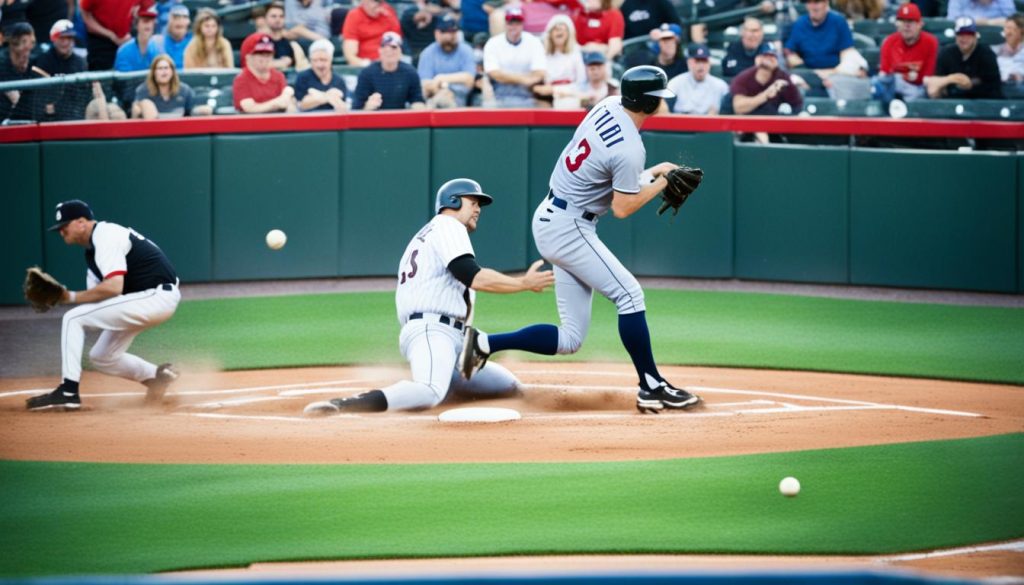
Baseball Drills and Skills Development
Practicing drills and developing skills through training are vital components of becoming a proficient baseball player. Whether you’re looking to improve your hitting, pitching, fielding, or base running abilities, there are various drills available to enhance your performance. By consistently dedicating time to these drills, players can strengthen their overall skills and improve their game.
Focusing on fundamental aspects such as proper footwork, hand-eye coordination, and communication is key to long-term growth and success in baseball. These skills provide a strong foundation for players to build upon and excel in various game situations.
Below are some essential baseball drills and skills that can help players refine their abilities:
Hitting Drills:
- Tee drills: Practice hitting stationary balls off a tee to improve swing mechanics and hand-eye coordination.
- Soft toss drills: Have a partner toss balls to you from a short distance, allowing you to work on timing and contact.
- Batting cage drills: Utilize batting cages to simulate game-like pitching and develop consistency in hitting.
Pitching Drills:
- Long toss drills: Focus on building arm strength and developing proper throwing mechanics by gradually increasing throwing distance.
- Bullpen sessions: Practice pitching from a mound under game-like conditions to improve accuracy and pitch control.
- Command drills: Incorporate target-based exercises to work on hitting specific spots in the strike zone.
Fielding Drills:
- Ground ball drills: Practice fielding ground balls from various angles to work on fielding mechanics and glove positioning.
- Fly ball drills: Practice tracking and catching fly balls to improve outfield positioning and glove-hand coordination.
- Relay and cutoff drills: Work on quick and accurate throws to specific targets to enhance defensive efficiency.
Base Running Drills:
- Base stealing drills: Practice reading pitchers’ movements and getting efficient jumps to improve your base-stealing abilities.
- Sliding drills: Practice sliding techniques to ensure safe and efficient base running.
- Rounding drills: Focus on making sharp turns around the bases to maximize speed and momentum.
Remember, consistent practice and dedication to these drills are essential for skill development and improvement in baseball. By focusing on the fundamentals and regularly implementing these drills into your training routine, you can enhance your overall performance on the field.
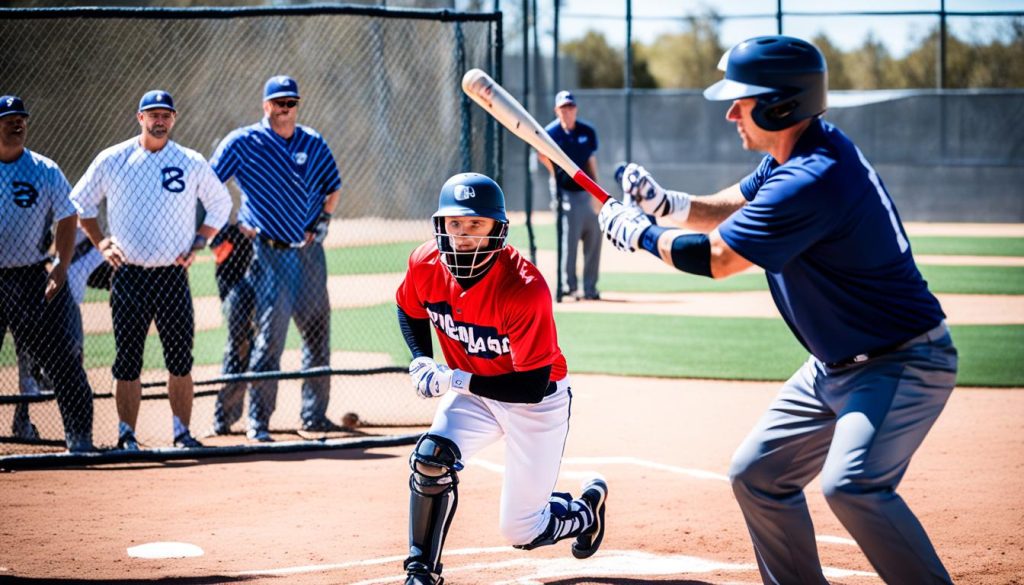
Conclusion
Baseball for beginners is an exciting journey filled with learning, growth, and the thrill of the game. By dedicating yourself to practice and understanding the fundamentals, you can master this complex sport. Whether you’re stepping onto the field for the first time or aiming to enhance your skills, a solid foundation is crucial.
Understanding the positions and rules of baseball are essential building blocks. Each position has its own responsibilities, contributing to the overall teamwork required for success. By practicing your techniques, from hitting to fielding, you can refine your skills and improve your performance.
Regular practice and dedication are the keys to long-term progress. Embrace the thrill of stepping up to the plate and feeling the weight of the bat in your hands. Put on your glove and immerse yourself in a sport that offers camaraderie, excitement, and endless possibilities. Baseball is waiting for you, so get out there and experience the joy of playing baseball!



